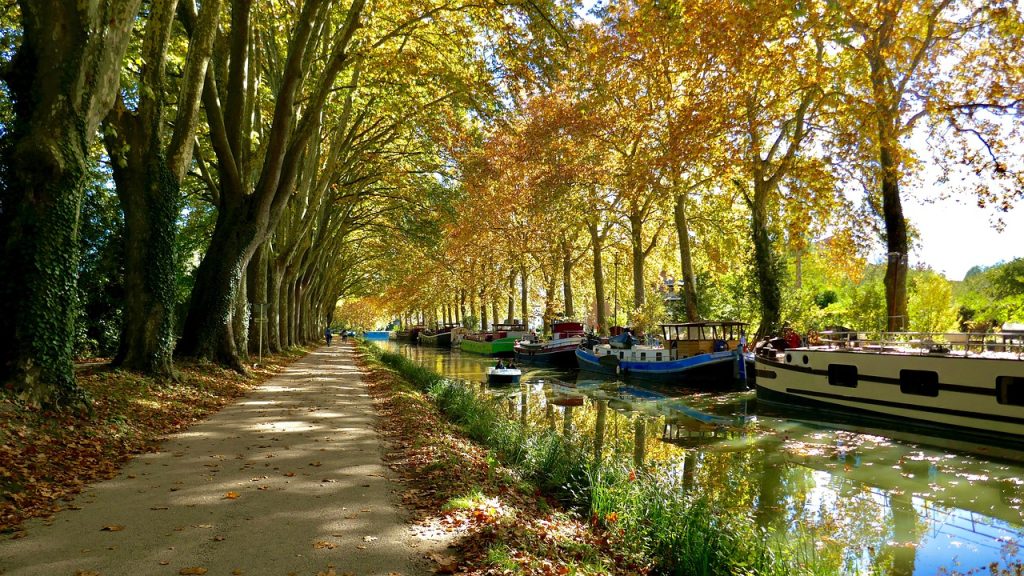
Perhaps you’ve heard about the famous Ohio Canal, but maybe you don’t know that much about it despite the fact that it exists. We want to change that by giving you this article exploring the history of this man-made canal. Learn how it was built, as well as how and when to visit it.
Timeline
Let us first give you a brief timeline of the building of the Ohio Canal:
- 1787 – George Washington and Thomas Jefferson discuss the importance of a route to connecting the Ohio River with Lake Erie.
- 1807 – Ohio’s Senator Thomas Worthington appeals to Congress to build a canal.
- 1812 – The Ohio General Assembly stresses the importance of a canal to connect the Great Lakes with the Hudson River.
- 1822 – The Ohio Legislature passes a motion to begin the construction of a canal with their own funds.
- 1825 – The construction commences.
- 1827 – The route from Akron to Cleveland, Ohio, is open.
- 1828 – The route from Akron to Massillon, Ohio, is open.
- 1829 – The route from Massillon to Dover, Ohio, is open.
- 1830 – The route from Dover to Newark, Ohio, is open.
- 1831 – The route from Newark to Chillicothe, Ohio, is open.
- 1832 – The Ohio and Erie Canal is completed.
The Matter of the Ohio Canal
You might know that the first railroad licensed to transport passengers and freight was the Baltimore and Ohio Railroad that began operation in 1830. However, before the first English railroad inspired American capitalists, Ohio required another mode of transportation.
Ohio was a scarcely popular territory of 50,000 residents in the late 1700’s. They needed a reliable type of transportation to make trading easier. George Washington and Thomas Jefferson recognized this problem and discussed the building of a canal connecting the Ohio River with Lake Erie.
It wouldn’t be until Ohio gained statehood (1803) that the matter would actually receive any attention from American lawmakers in the capital. Ohio’s first Senator Thomas Worthington immediately used his new position to support the interests of his home state. DeWitt Clinton was assigned as commissioner of the Erie Canal construction.
Clinton wanted not only a canal connecting the Ohio River with Lake Erie, but also one connecting them to the Hudson River to make trading with the East Coast easier. His proposal fell on deaf ears.
Five years later, the Ohio Legislature proposed the same thing with the hopes that Congress changes its mind. The timing couldn’t be more inappropriate as the United States went to war with Britain in 1812 and couldn’t even afford to realize the original plan of the Ohio River-Lake Erie Canal.
Feeling like this project wouldn’t receive federal funding any time soon, Ohio looked into other ways to finance it. Clinton became the Governor of New York and showed his readiness to help Ohio build the Erie Canal without national aid. Ohio agreed, but due to the high cost, the plan didn’t come to fruition.
In 1817, however, the Ohio Legislature officially passed the resolution that would start the construction of the canal and would be financed by the state.
Building the Ohio Canal
Ohio hired engineer James Gaddes who worked on the New York canals to undertake the Ohio Canal construction. It was decided that the canal would serve the Cincinnati-Cleveland route where most Ohioans lived.
The Ohio Legislature passed an act on February 4, 1825, to allocate funds to the Canal Commission. The commission was allowed to borrow $400,000 in 1825 and $600,000 in the consecutive years. Ground was broken on July 4, 1825 near Newark, Ohio.
The minimum dimensions of the canals were as follows: width of 40 feet at the top and 26 feet at the bottom, and a depth of 4 feet. These dimensions were always exceeded due to the nature of canal-building and the specific geography of the area.
The Canal Commission didn’t have any issues with enlisting laborers. The job was attractive and it paid well for the time period’s standards (up to $15/per month).
On July 3, 1827, the first boat from Akron sailed along the canal and reached Cleveland on July 4 in time to celebrate Independence Day. A new route would open in the following four years (Akron-Massillon, Massillon-Dover, Dover-Newark, Newark-Chillicothe) until the canal was officially completed in 1832, spawning over 308 miles.
Prosperity and Abandonment
The canal brought great prosperity to the state as Ohio became the third most wealthy state in the 1840’s due to it. Still, it was obvious that railroads would eventually take over. Ohio leased the canals to private individuals, which inadvertently led to their demise as they weren’t properly served.
Add to this a few floods, and you can guess why the once-prosperous canal system was abandoned in 1913.
Visiting the Ohio Canal
You cannot begin to imagine the canal in its glory, but at least you can visit the Ohio Canal National Historical Park. The 184-mile towpath will send you on a trip back in time with its charming little houses along the track.
What’s more you can even ride on a replica 1870’s packet boat or a 1900’s electric launch boat on the surviving parts of the canal. The park is the perfect place for hiking and we recommend allocating a few days to this Ohio adventure.
